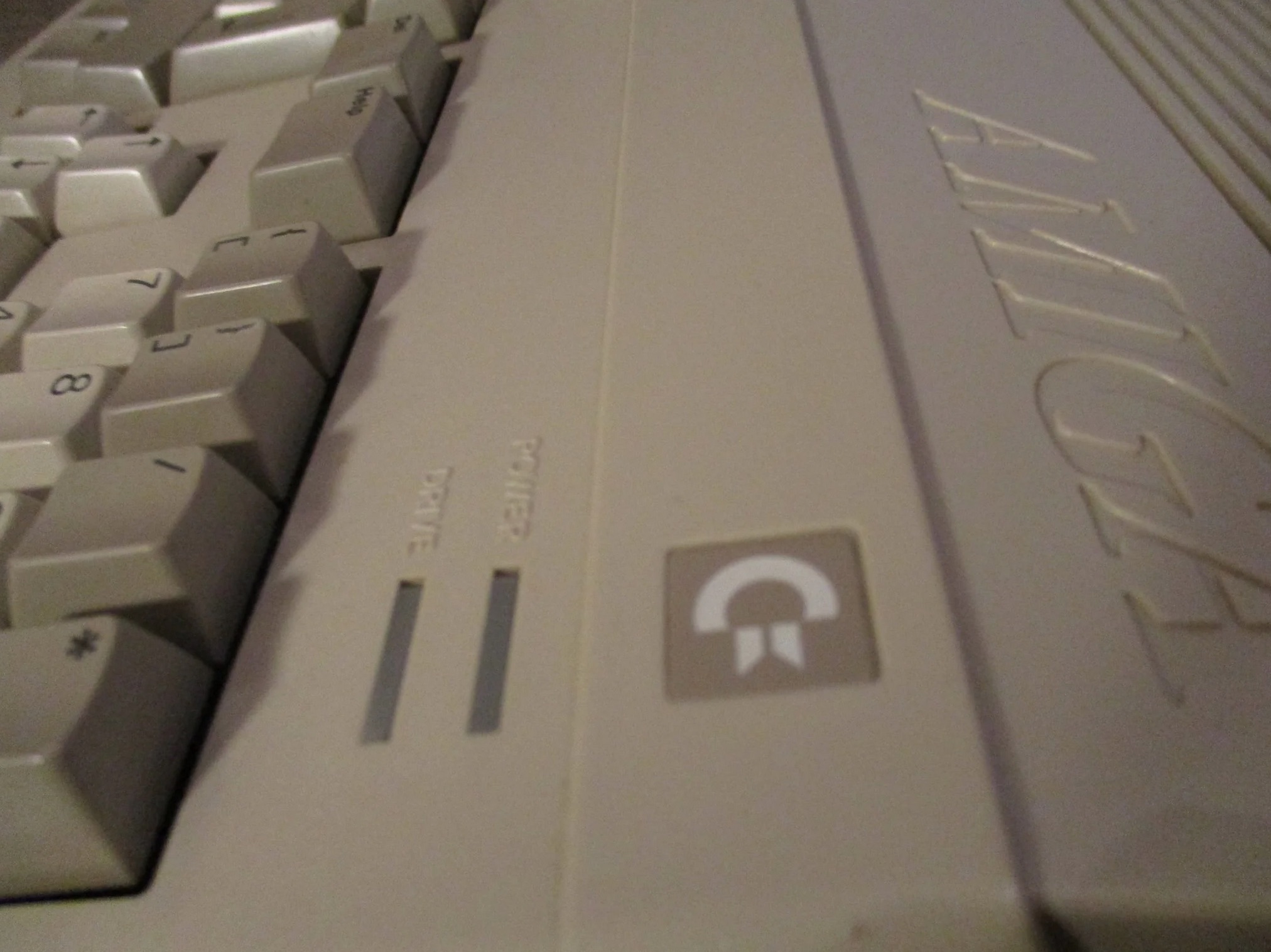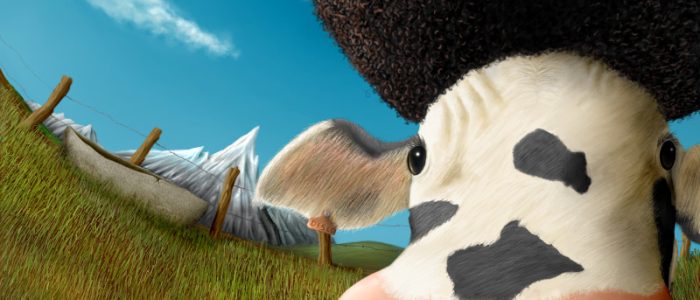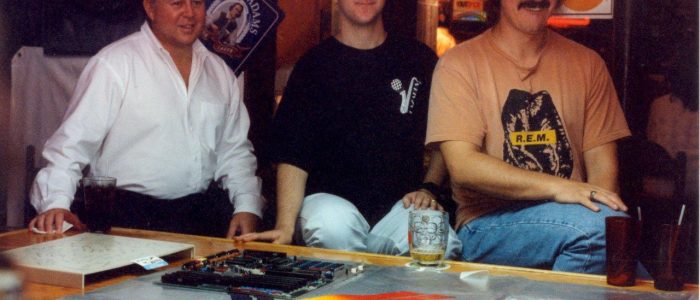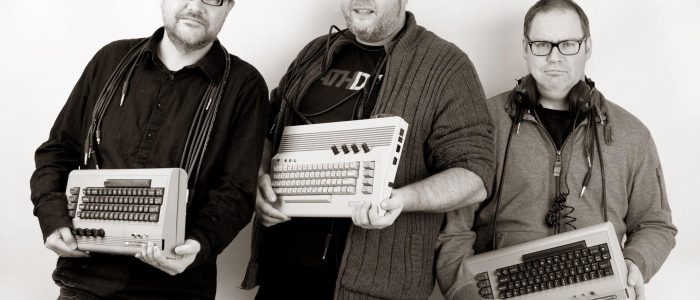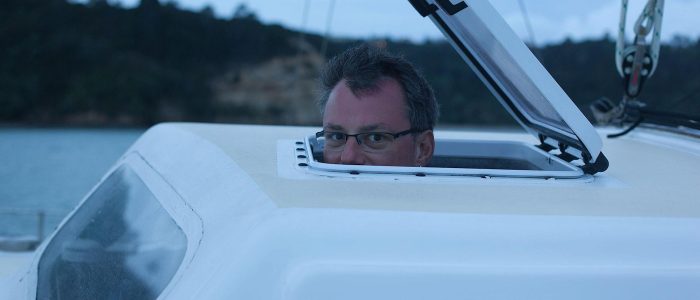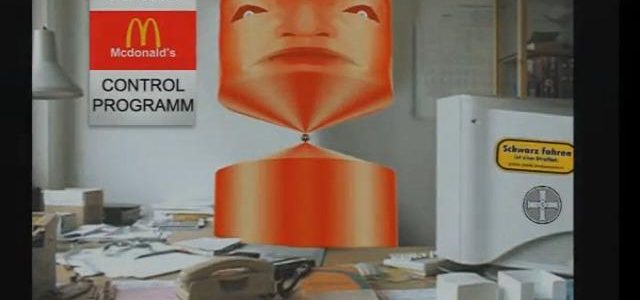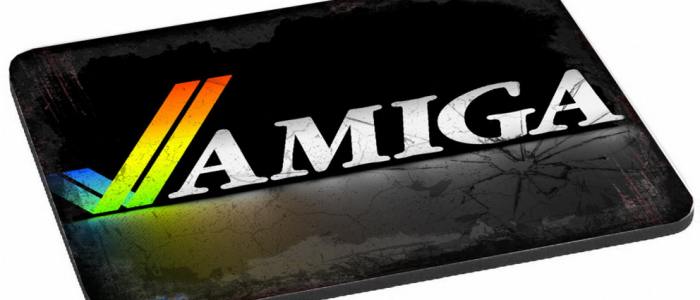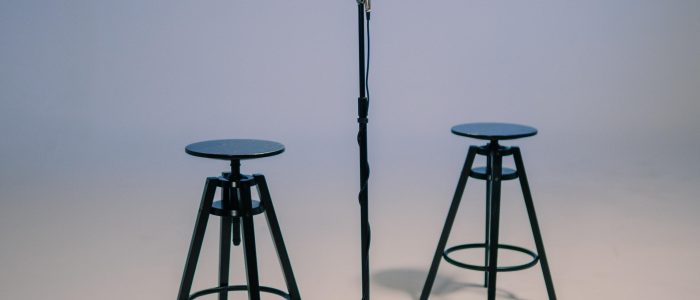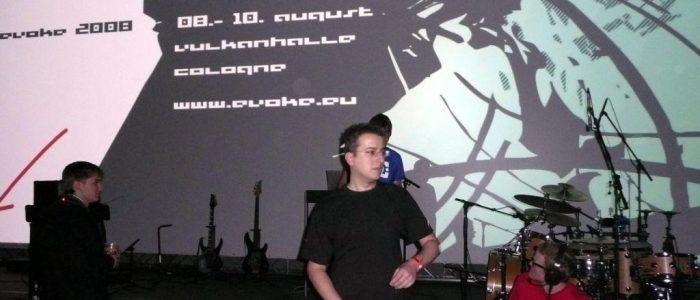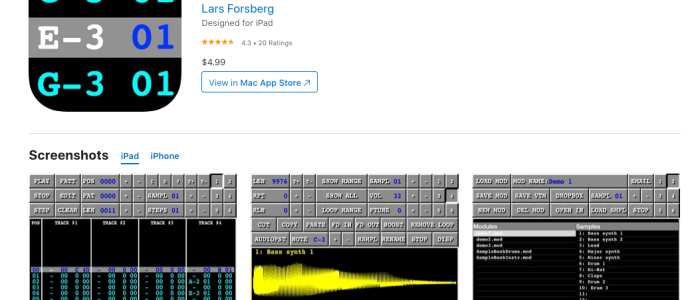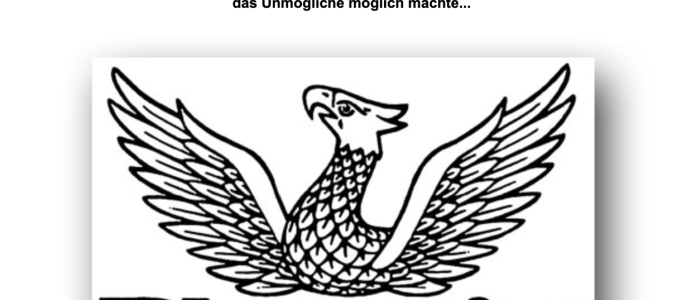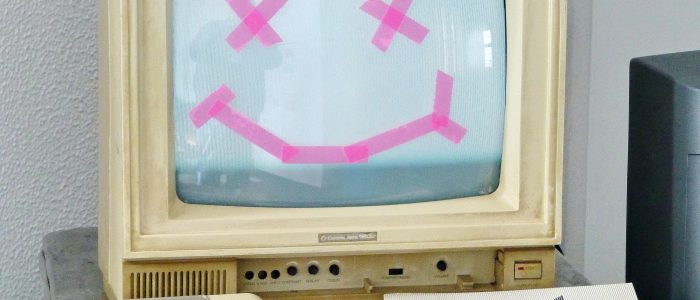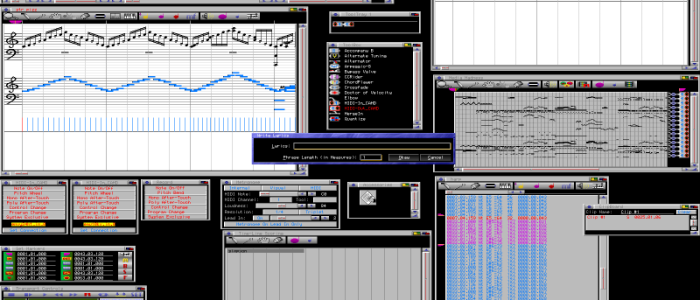Interview with the ASCII artist Michael Hischer, better known as sk!n/DeZign. He caused a sensation in the early '90s. He was active on Amiga.
You can find the german version of the interview here.
What is ASCII art anyway?
Artists of the ASCII art can only use 95 characters for their representations. ASCII stands for American Standard Code for Information Interchange. In terms of the character set, this is a standard established in 1963 that was later used on many computers. Instead of a painting program like Photoshop, ASCII artists only use a text editor. They create their works of art from the characters of the Latin alphabet in upper and lower case, the ten Arabic numerals, some punctuation marks (punctuation marks, word signs) and a few other special characters. This limitation represents a great challenge for ASCII art. You have to be able to make something great-looking out of the few available resources (punctuation marks). Once you’ve tried it, you’ll quickly realize the difficulty of this endeavor. It’s not difficult to create anything with the characters of the ASCII character set. But if you want it to look good, it gets really complicated. This requires a lot of ingenuity and creativity. The early nineties can undoubtedly be regarded as the heyday of ASCII art. One of the computers that dominated the home area at that time was without doubt the Commodore Amiga. ASCII Art did not only play an important role with the illegal mailboxes (Bulletin Board Systems = BBSs). At that time all release groups (warez) on the Amiga provided their illegal releases with logos of ASCII artists. The two best known and most innovative representatives of this art movement were called sK!N and Amblin.„For me, developing graphics has always been relaxation.“
Lars Sobiraj: Maybe you would like to introduce yourself for the beginning? Does your current profession have anything to do with art? Was there any possibility to apply your experiences and skills from the Amiga scene somehow in your professional life? Raiders of the lost dukesk!n/deZign: My name is Michael Hischer aka sk!n/deZign (formerly Extensors, Pirates etc.). I was born in the early 70s in Berlin. I am a digital artist in the field of text mode graphics, especially in Amiga ASCII art, but also in pixel graphic design. But I have also supported homepage appearances and print products.
And during the good Amiga-BBS time, in the early 90’s, I did not only the graphic design of umpteen BBS systems worldwide, at the project „Unreal“ and „deZign“, but also other different tasks in the BBS scene. My current job has nothing to do with my past as an artist. I am currently working as a salesman and trainer. Developing graphics has always been a hobby for me. I have always separated that from my job. But this step was never an option for me. Developing graphics has always been relaxation for me. Work, on the other hand, is often associated with stress and responsibility.
As far as I know, there is no special ability in professional life and as in the Amiga scene at that time. But my experiences already in the Amiga time with many people from all over the world, to communicate and work, still shapes my life today. I love to travel and get to know people from other cultures. I like to learn different perspectives and other languages, to dive into foreign cultures and absorb inspiration like a sponge.
Raiders of the lost dukesk!n/deZign: My name is Michael Hischer aka sk!n/deZign (formerly Extensors, Pirates etc.). I was born in the early 70s in Berlin. I am a digital artist in the field of text mode graphics, especially in Amiga ASCII art, but also in pixel graphic design. But I have also supported homepage appearances and print products.
And during the good Amiga-BBS time, in the early 90’s, I did not only the graphic design of umpteen BBS systems worldwide, at the project „Unreal“ and „deZign“, but also other different tasks in the BBS scene. My current job has nothing to do with my past as an artist. I am currently working as a salesman and trainer. Developing graphics has always been a hobby for me. I have always separated that from my job. But this step was never an option for me. Developing graphics has always been relaxation for me. Work, on the other hand, is often associated with stress and responsibility.
As far as I know, there is no special ability in professional life and as in the Amiga scene at that time. But my experiences already in the Amiga time with many people from all over the world, to communicate and work, still shapes my life today. I love to travel and get to know people from other cultures. I like to learn different perspectives and other languages, to dive into foreign cultures and absorb inspiration like a sponge.
„My time in the Amiga scene will always be a part of me.“
Lars Sobiraj: How did it happen that you became a part of the Amiga scene at all? sk!n/deZign: What I first noticed on the Amiga were the great demos and intros of various groups. The Silents, Tristar & Red Sector, Fairlight, Spaceballs, etc. These were groups that have set standards. With how much passion and cleverness, these programmers and graphic artists, had tickled visual things out of this machine was already breathtaking and scary, and I liked it. That’s what I wanted to do. I used Deluxe Paint software to work on fonts and logos for various projects. And the one person knows the one who knows the one and so on. That’s how it was in the scene at the time and without any recording ritual. I also didn’t have to sleep my way up :) My business cards were my own graphics. One was respected for it. Other people just copied and imitated what they weren’t respected for. Besides, I discovered the big digital world of the BBS scene. The Internet, as we know it today, was still a few years away. I was only with a lame 2400 Baud modem on the way. Later I used a 14.400 baud modem from US-Robotics, which was only suitable for dialing the phone numbers of relevant BBS systems. There was always the hope for a „Connect“. That was sometimes very annoying, because many BBS systems had only one telephone number and were very often occupied. A little remedy was later found with several „nodes“, i.e. more phone numbers. If you called the boards abroad, you also paid attention to the time of the respective country. Including the time change, early in the morning or very late at night, there was almost always a good option to get a free line to „call“ it. My conclusion at this time. It was totally exciting. I got to know great people, this stage of life will always be a part of me.Commodore Amiga: the revelation that gave all creatives a real „kick in the ass„!
Lars Sobiraj: Why the Amiga and no other computer platform? Which computer do you use today? sk!n/deZign: In the early 80s I made my first steps towards a home computer on an Atari 800XL and the software KoalaPaint and the corresponding KoalaPad touchpad. You could paint graphics on it with a pen or your fingers and it immediately transferred the results to a monitor. In fact, it was the forerunner of today’s touchpads and drawing boards, which many professionals use today to create presentations and graphics for the film and software industry. My very first painting was a cruelly styled Ghostbusters logo. A little later the journey went over the Schneider CPC 464 (Amstrad), which by the way had a great and easy to understand basic, to the legendary „bread box“ (Brotkiste), the Commodore 64. Lars Sobiraj: … with a much less simple basic. sk!n/deZign: But when the Commodore Amiga was released it was like a revelation for one’s own creativity, a kick in the ass for one’s own sleeping talent. With the Amiga so many things were suddenly visually and acoustically possible. So damn many colors. So damn sexy. And enough software to realize the ideas in your head. Surely an Atari ST would have been possible, but in the end so many friends had an Amiga or wanted to buy one soon. It was a good decision and for many other artists certainly also. Well, like many other users I jumped on a PC later after the company bankruptcy of Commodore. This developed over the years to a perfect multimedia machine. But the big advantage of the Commodore Amiga was always that all hardware was already integrated and you didn’t have to buy anything expensive. With the earlier MACs I never really got warm. And also the graphics software there was very manageable. I have remained faithful to the PC to this day and currently have a PC with an AMD Ryzen 1700 and am still trying out new graphics software.„If Kimble hadn’t demonstrated blueboxing on TV, someone else would have.“

Hanging around on some bulletin board systems
Lars Sobiraj: Were you more into US BBSs back then? If so, on which one? Or did you primarily visit the boards (mailboxes) in your home country Berlin or in Europe?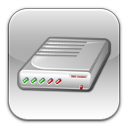 sk!n/deZign: I was mainly hanging around on the BBS headquarters of „deZign“ (aka „Unreal“) like The Addiction (USHQ) or Point Blank (USHQ), but also on several other BBS systems worldwide. When requesting the sysops (system operators) I was mostly on their boards to add the graphics and never called again.
Here in Germany it was the World Trade Centre of Shut Berlin or the Traders Home of Kalle, as well as the Ice Cream BBS of Paso and Ramses. I was there rather unstable and really faithful only to a handful of BBS systems. Unfortunately, the weekend was too short even then. The school called on Mondays, freaks like me with square eyes, according to my name. And you can certainly confirm that this wasn’t a healthy time in terms of sleep deprivation and poor nutrition, even worse drinks and excuses for parents to get up on Monday morning, but had actually been awake since Friday. I don’t know how I got through this without Red Bull & Co., because that wasn’t there yet. But I think many people from the scene will recognize themselves in the profile of a normal computer freak of that time.
sk!n/deZign: I was mainly hanging around on the BBS headquarters of „deZign“ (aka „Unreal“) like The Addiction (USHQ) or Point Blank (USHQ), but also on several other BBS systems worldwide. When requesting the sysops (system operators) I was mostly on their boards to add the graphics and never called again.
Here in Germany it was the World Trade Centre of Shut Berlin or the Traders Home of Kalle, as well as the Ice Cream BBS of Paso and Ramses. I was there rather unstable and really faithful only to a handful of BBS systems. Unfortunately, the weekend was too short even then. The school called on Mondays, freaks like me with square eyes, according to my name. And you can certainly confirm that this wasn’t a healthy time in terms of sleep deprivation and poor nutrition, even worse drinks and excuses for parents to get up on Monday morning, but had actually been awake since Friday. I don’t know how I got through this without Red Bull & Co., because that wasn’t there yet. But I think many people from the scene will recognize themselves in the profile of a normal computer freak of that time.
Respected: the old and the new guard of artists.
Lars Sobiraj: Who were or are your favorite artists when it comes to ASCII art? And why? Heavy Metal 2 by sk!n/deZign.sk!n/deZign: The first thing to mention is the old guard, such as Enforcer, Red Devil, Splatt, Redskin, FCKW or Intruder. All artists who had their own great style at a very early age, but who have still developed further.
I also found the things of Amblin outstanding, who always had this unmistakable, timeless style. Or artists from Scandinavia, who always had extraordinary artists in the pixel and ascii area like Shapechanger from Sweden, who was one of the first with ASCII comic templates and a perfect logo design. Legendary his MAD Magazine ASCII graphics. In the tradition of great Scandinavian Ascii artists, there are also Karma, Danzig and U-Man. With them you could be sure that there was always something good about ASCII. Not to forget the Metalbasher (Italy). His graffiti style was great to look at. Or Desert (Germany) and also Mogue (Germany), impressed me with their collections, because of this wildness in style. But also the second generation of Amiga Ascii artists did damn crazy things with the keyboard. You could see during all this time that simple Amiga ASCII code can be so versatile and rightly has its place in digital art. Ultimately, Amiga ASCII art has produced so many fantastic artists.
Lars Sobiraj: That’s right. By the way. Many of your works look very figurative. Why did you choose the ASCII code for your expression? What is the advantage compared to painting programs like Dan Silvas Deluxe Paint? Do you see the restriction to the characters of the ASCII code more as a restriction or rather as an incentive?
sk!n/deZign: There is the Amiga time from 1991 to 1997, there I let develop more from the gut. Things I created from 2011 are mostly created in my head. Those were much more mature ideas. But I was inspired by other templates and artists.
I also liked painting a lot with the painting program Deluxe Paint. Mainly logos and fonts. You couldn’t get past the software if you wanted to be creative. But the limitation of ASCII has always been a challenge and an incentive for me. I wanted to develop minimalist looking ASCII graphics that didn’t require a thousand colors or any retouching functions. That was just a minimalistic rough art. And yes, and it was basically something completely different than conjuring pixel by pixel with Deluxe Paint. In the area of pixel graphics, the scene was already early equipped with outstanding artists such as Angeldawn (Germany) or Archmage (Sweden).
The ASCII scene was quite young and there were only a handful of good ASCII artists. That was a scene that could still grow and produce even more great artists. My impression is that it takes much more time to create an elaborate ASCII graphic than if I worked with pixel graphics (painting programs). But also there it is probably different from artist to artist.
Heavy Metal 2 by sk!n/deZign.sk!n/deZign: The first thing to mention is the old guard, such as Enforcer, Red Devil, Splatt, Redskin, FCKW or Intruder. All artists who had their own great style at a very early age, but who have still developed further.
I also found the things of Amblin outstanding, who always had this unmistakable, timeless style. Or artists from Scandinavia, who always had extraordinary artists in the pixel and ascii area like Shapechanger from Sweden, who was one of the first with ASCII comic templates and a perfect logo design. Legendary his MAD Magazine ASCII graphics. In the tradition of great Scandinavian Ascii artists, there are also Karma, Danzig and U-Man. With them you could be sure that there was always something good about ASCII. Not to forget the Metalbasher (Italy). His graffiti style was great to look at. Or Desert (Germany) and also Mogue (Germany), impressed me with their collections, because of this wildness in style. But also the second generation of Amiga Ascii artists did damn crazy things with the keyboard. You could see during all this time that simple Amiga ASCII code can be so versatile and rightly has its place in digital art. Ultimately, Amiga ASCII art has produced so many fantastic artists.
Lars Sobiraj: That’s right. By the way. Many of your works look very figurative. Why did you choose the ASCII code for your expression? What is the advantage compared to painting programs like Dan Silvas Deluxe Paint? Do you see the restriction to the characters of the ASCII code more as a restriction or rather as an incentive?
sk!n/deZign: There is the Amiga time from 1991 to 1997, there I let develop more from the gut. Things I created from 2011 are mostly created in my head. Those were much more mature ideas. But I was inspired by other templates and artists.
I also liked painting a lot with the painting program Deluxe Paint. Mainly logos and fonts. You couldn’t get past the software if you wanted to be creative. But the limitation of ASCII has always been a challenge and an incentive for me. I wanted to develop minimalist looking ASCII graphics that didn’t require a thousand colors or any retouching functions. That was just a minimalistic rough art. And yes, and it was basically something completely different than conjuring pixel by pixel with Deluxe Paint. In the area of pixel graphics, the scene was already early equipped with outstanding artists such as Angeldawn (Germany) or Archmage (Sweden).
The ASCII scene was quite young and there were only a handful of good ASCII artists. That was a scene that could still grow and produce even more great artists. My impression is that it takes much more time to create an elaborate ASCII graphic than if I worked with pixel graphics (painting programs). But also there it is probably different from artist to artist.
ANSI was never my first priority
Lars Sobiraj: That’s certainly correct. Have you ever thought about switching to the ANSI type? Or are there too many design possibilities there? ;-) sk!n/deZign: During Amiga BBS times I created some Amiga ANSIs for many boards (illegal mailboxes), but unfortunately little has been saved into today. They were used in the respective BBS systems and for me my work was done with them. The only thing I could save were some started projects, which never came off. You will be able to see these unpublished things in my planned book. To be honest, I wasn’t really interested in what happened to the graphics back then. I didn’t collect anything either. I never thought that it would be interesting for other people later on. This can be seen in the fact that I only discovered most of my ASCII collections in 2011 by pure chance on the Internet. But if you look at the ANSI graphics of the Blocktronics group, for example, which are of very high quality, you have to acknowledge that there are already very good artists in this area. And you stay where you feel comfortable. With the Ansi editor PabloDraw it is similar to working with pixel graphics, only coarser and you have much less colors. But it comes quite close to the old feeling, because limitations are also a topic here. Lars Sobiraj: Today’s image processing programs are virtually limitless in their functions and filters. With Photoshop, painting has long since ceased to be an art, as long as you have some control over the software. Would you say that the scene has lost the meaning of art because of the enormous capabilities of such programs? Or do you rather see the many options and filters of image editing programs as help? (Background for readers: Those who created their graphics with Deluxe Paint actually had to set point by point. Later, more and more graphic artists of the Amiga scene switched to having the work of PC painting programs made easier or even removed. This went so far that photos were alienated until they looked like a graphic again. In the end, the finished result was converted back into a format or resolution typical for the Amiga, ready.)Sk!n/deZign about today’s technology: „Thinking a little yourself can work wonders“.
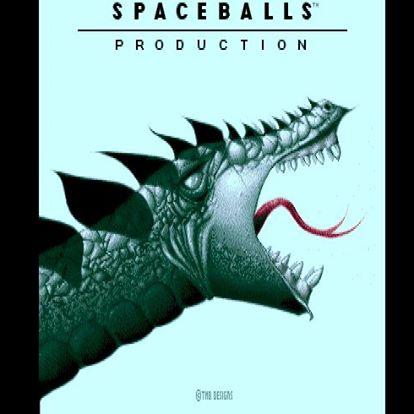
„Graffiti can bring grey suburbs and desolate areas to life with color.“
Lars Sobiraj: I can only agree with that. The graffiti scene, has that ever appealed to you? Have you ever picked up a spray can? sk!n/deZign: I was very inspired by the oldschool graffiti of the 80s from the USA. And by that I don’t mean all those trollish tags on walls that chimpanzees could have drawn without problems with their eyebrows. But these great large-scale works of art that were bombed onto the walls with so much love and creativity. And I’m always happy when I see myself travelling around the world in a great old school style. That opens my heart. I leave the question whether graffiti is illegal or legal to others. But graffiti can bring grey suburbs and desolate areas to life with colour and thus considerably increase the understanding of art. And instead it’s only hewn and only reported when trains are bombed (fully sprayed) through the cities. That doesn’t do justice to this art form. In the end, even the Neanderthals have drawn graffiti on the walls. And what is so old cannot be bad at all. But to come back to your actual question. No, it never appealed to me. I rather immortalized things on paper with a pencil and then converted them digitally. And yes, I already had spray cans in my hand, but we’d rather keep quiet about the result. I always had problems creating such big things. I’m on the safe side with a small monitor. I like to leave that to the real graffiti artists out there.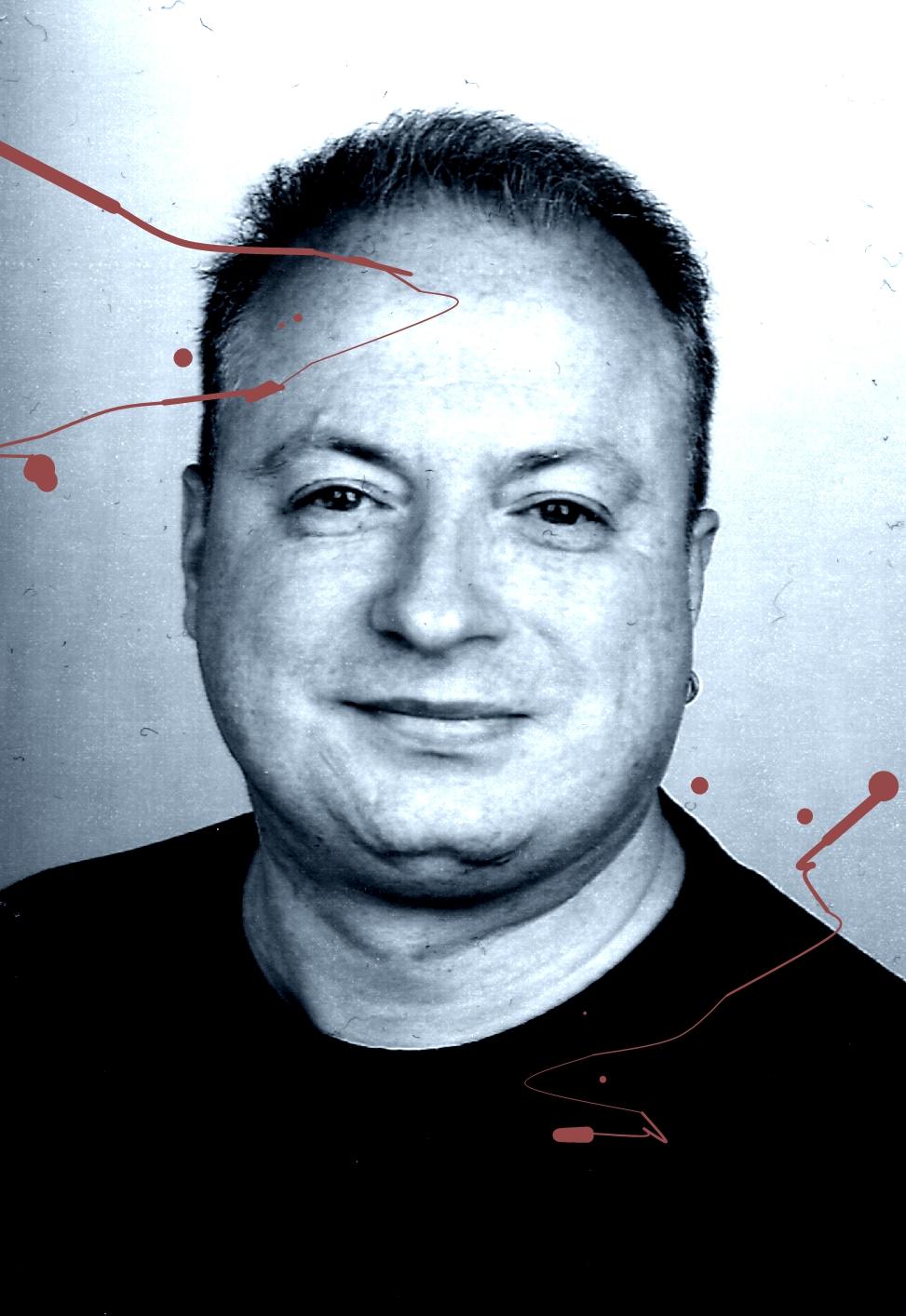
sk!n/deZign: ASCII- and ANSI-Art was always a niche product.
Lars Sobiraj: When searching for your works, you spontaneously only find DeZign on Facebook and your own private FB page. Why does the ASCII scene seldom post its works on the Internet? sk!n/deZign: ASCII and ANSI art used to be more and more a niche product to the actual Amiga scene. In the early 90s there were no real ASCII/Ansi competitions at demo or copy parties. And I think that at that time many ASCII artists couldn’t appreciate the value of this kind of art. The ASCII or ANSI scene was more private. Usually only the members of the BBS scene respected these graphics, because the sysops (operators of illegal mailboxes) could pimp their boards with them and profited from them. In addition, Commodore filed for bankruptcy in 1994. As a result, many artists jumped over to the PC or even left the scene. So many things were lost. Unfortunately there was very little interest to stop this development somehow. Until well into the 2000s there was a following generation of fresh artists along with a few oldschoolers of the 90s. They animated the ASCII scene with many collections. A few years ago there was a great project called ASCII-Arena. This project bundled many thousands of ASCII collections on their website. Outsiders really had the opportunity to access a large pool of ASCII works, all on one website. Unfortunately, this ingenious site has now been taken off the net. Occasionally there have been miserable attempts to present Amiga-ASCII, but it has remained that way. Lars Sobiraj: Why is there no website from you where you can look at your artworks with the right resolution, font and background color? sk!n/deZign: An own website is under construction since some time (www.dezign-art.net). But hobbies always have one disadvantage: too little time. And also my other hobby, travelling, demands my full attention. Priorities have to be set. Facebook and Twitter are contact points where you can get in touch with me. But as I said, I’m working on it. And before the old generation of ASCII artists and fans has died away, I will offer a great homepage. I promise!„Fun has always been the deciding factor.“

It will take more time until he can finish his book.
Lars Sobiraj: Please tell us about your book. When does it come out, what can we expect in it? sk!n/deZign: The project I’m working on will be a little time travel into the Amiga ASCII history from the early 90s until today. I will go a little bit into the techniques and steps of an ASCII graphic and the software and fonts used. Logos, BBS styles, descriptions and graphics will be the focus. I don’t want to be bored with text, but I want to show people how this kind of graphics was used in the past and what was possible. This is difficult, because not all of my graphics are available anymore. I am dependent on the fact that possibly still some people have old Collections of me. So this is a kind of call to everyone who might still have some material of mine. Give it to me! You can be sure of an entry for my project. All this will be supplemented with unpublished material and newly edited graphics from the past. The project will clearly be based on the Amiga-ASCII style. I have in mind a kind of PDF file, which will receive updates at irregular intervals and will be available on my website for free. Lars Sobiraj: We are curious. You were now on the Berlin deadline. What is it like for you to be at a scene party again after so many years? Did you recognize people there? sk!n/deZign: The Deadline Demoparty in Berlin is a great thing. Organized by people who sacrifice their free time for it. It’s not about commerce, it’s about bringing people from the old scene and the new generation together. Or just having a great time together with like-minded people on a weekend in August. The deadline is now in its fifth year, and more and more people are coming from year to year. The most striking feature of a demo party today is that no software is copied until the doctor arrives :) And surely you will meet some oldschoolers there. Unfortunately I’m not the best when it comes to recognizing people after so many years.Many contacts are lost forever
Lars Sobiraj: Are you still in contact with other former activists via social networks? Have they maintained their relationship to the scene over the years? sk!n/deZign: There have been hundreds of ASCII artists over the years, but either not many have made it into the social media or interest was or is not high enough to be found. The contact is more with the new generation of ASCII/Ansi artists, for example the guys of the groups Blocktronics, Impure 1940 or Break!Ascii. Recently I got to know the Dipswitch from Switzerland at the Deadline Demoparty. A very nice guy, who knows a lot about the text mode scene.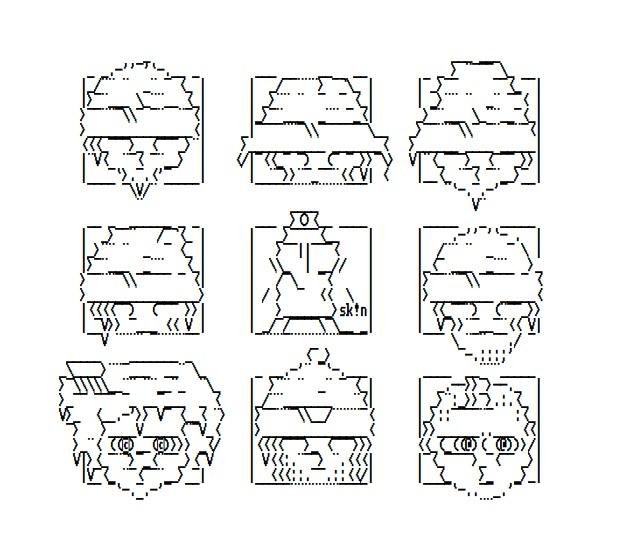 The Metalbasher (formerly in Upperclass) wrote to me some time ago on Facebook. With U-Man from Sweden I also have some FB contact and H2o/TRSI now lives his great art in the kitchen from time to time even digitally. Amblin is no longer in the mood for style, although a new Colly with him would be something great. Every now and then I get written to by people who seem to know me, but I have no idea where to put them. But on the whole, people don’t usually do ASCIIs anymore and their interests are clearly elsewhere.
The Metalbasher (formerly in Upperclass) wrote to me some time ago on Facebook. With U-Man from Sweden I also have some FB contact and H2o/TRSI now lives his great art in the kitchen from time to time even digitally. Amblin is no longer in the mood for style, although a new Colly with him would be something great. Every now and then I get written to by people who seem to know me, but I have no idea where to put them. But on the whole, people don’t usually do ASCIIs anymore and their interests are clearly elsewhere.
New priorities for artists beyond the age of 50: get rheumatic ointment, pimp up the wheelchair!
 Lars Sobiraj: Do you still accept requests? I hope, are you still active or are you active again?
sk!n/deZign: I don’t accept requests in the classical sense anymore. Only in exceptional cases with friends. Time simply doesn’t allow that anymore. Sometimes I do something for ASCII competitions at demo parties for fun. I’m slowly approaching the 50 and there are other priorities in demand, such as getting rheumatism ointment and pimping up your own rollator with more PS. ;-)
Lars Sobiraj: Do you want to say a few greetings to people and groups at the end?
sk!n/deZign: I greet everyone who knows me and respects my art form. I thank my girlfriend for her support, all her love and the respect she shows me. But also her acceptance for the little boy in me, with all his craziness and ideas. Furthermore, I greet the guys from Blocktronics, Impure 1940, Break!Ascii, Galza, Ice, Fuel and Mistigris, who all do a great job and support the text mode scene in different ways.
I want to express my deep respect for the scene groups like Desire, TRSI, Fairlight, Genesis Project, Rabenauge, Hemroids, Alpha Flight, Spaceballs, Divine Stylers, Paradox, Planet Earth, UpRough, Scarab and The Silents.
A more detailed greeting list comes in my next project. And if the reader hasn’t fallen asleep until here, then at the latest after my extensive greetings list. :) ;)
P.S: And I thank you for your great project Tarnkappe.info!
The conversation was conducted by Lars „Ghandy“ Sobiraj of Nukleus. You can find the german version of the interview here.
Tarnkappe.info
Lars Sobiraj: Do you still accept requests? I hope, are you still active or are you active again?
sk!n/deZign: I don’t accept requests in the classical sense anymore. Only in exceptional cases with friends. Time simply doesn’t allow that anymore. Sometimes I do something for ASCII competitions at demo parties for fun. I’m slowly approaching the 50 and there are other priorities in demand, such as getting rheumatism ointment and pimping up your own rollator with more PS. ;-)
Lars Sobiraj: Do you want to say a few greetings to people and groups at the end?
sk!n/deZign: I greet everyone who knows me and respects my art form. I thank my girlfriend for her support, all her love and the respect she shows me. But also her acceptance for the little boy in me, with all his craziness and ideas. Furthermore, I greet the guys from Blocktronics, Impure 1940, Break!Ascii, Galza, Ice, Fuel and Mistigris, who all do a great job and support the text mode scene in different ways.
I want to express my deep respect for the scene groups like Desire, TRSI, Fairlight, Genesis Project, Rabenauge, Hemroids, Alpha Flight, Spaceballs, Divine Stylers, Paradox, Planet Earth, UpRough, Scarab and The Silents.
A more detailed greeting list comes in my next project. And if the reader hasn’t fallen asleep until here, then at the latest after my extensive greetings list. :) ;)
P.S: And I thank you for your great project Tarnkappe.info!
The conversation was conducted by Lars „Ghandy“ Sobiraj of Nukleus. You can find the german version of the interview here.
Tarnkappe.info 